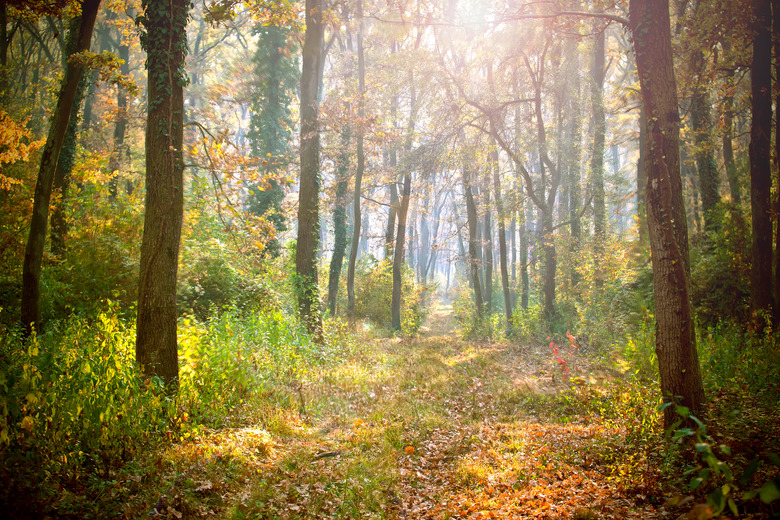How Does Summer Affect The Lives Of Plants & Animals?
Summer Definition
Summer Definition
"Summer" is naturally a flexible term when speaking about ecosystems, which can exist in a variety of different climates where summers may be wildly different from each other. In some places summer may herald the beginning of a rainy season, while in others it may start a long, dry spell without any water at all. Some summer seasons are very long and can last half the year or more, and in other areas the summer season is barely noticeable. However, if atmospheric conditions, soil properties and general location are all taken into account, summer can be seen as a period of warmer temperatures (at least slightly) at any place in the world.
Moist Environments
Moist Environments
These warmer temperatures mean, of course, heat. Heat is both the bane and blessing of most ecosystems. Summer heat is usually required for animals and plants to survive, but competition over it can be fierce. In tropical ecosystems, for instance, trees and plants are in a continual struggle to reach the most sunlight possible, stretching leaves and fronds toward the summer light and crowding out any smaller plants, which, left in shadow, have little chance of survival. Animals are also greatly affected by the heat, especially small organisms like bacteria or creatures like insects. In moist environments, summer heat can increase the growth of bacteria and viruses, creating a greater chance for the spread of disease, although the heat also increases the viability of insect eggs and raises the insect population, giving smaller animals more to eat and spreading more energy throughout the food chain.
Dry Areas
Dry Areas
In dry areas, summer heat can be very dangerous, and many animals seek protection underground and venture out mostly at night. Desert plants will often seal off their pores during the driest months and use their reserves of water and carbohydrates to survive, synthesizing more proteins during the night when it is cooler. Of course, some animals need this heat to survive–cold-blooded creatures like lizards and snakes must warm themselves in the sun's rays, and summer can be the most active time for these scaled creatures, giving them the chance to spread out and find mates.
Animals especially (although plants also go through the process) change their patterns and behaviors based on the cycle of seasons. Scientists believe that organisms naturally sense the changes in the light cycles of the sun and automatically change their behavior accordingly. Many animals breed so that they give birth in the spring and raise their young in the summer, when food is plentiful and there is safety in numbers. In very cold areas, animals wait until summer, when the ice begins to melt, to migrate, mate and forage for food. Plants can be more picky about just the right conditions to grow flowers or produce seeds, but the seasons, along with temperatures and moisture conditions, also play an enormous role in governing their cycles.
Cite This Article
MLA
Lacoma, Tyler. "How Does Summer Affect The Lives Of Plants & Animals?" sciencing.com, https://www.sciencing.com/summer-affect-lives-plants-animals-5530947/. 22 November 2019.
APA
Lacoma, Tyler. (2019, November 22). How Does Summer Affect The Lives Of Plants & Animals?. sciencing.com. Retrieved from https://www.sciencing.com/summer-affect-lives-plants-animals-5530947/
Chicago
Lacoma, Tyler. How Does Summer Affect The Lives Of Plants & Animals? last modified August 30, 2022. https://www.sciencing.com/summer-affect-lives-plants-animals-5530947/
